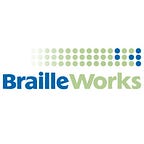508 and WCAG: What’s the Difference? — Braille Works
There seems to be a lot of confusion around the difference between Section 508 and Web Content Accessibility Guidelines (WCAG). Some people even view these terms as interchangeable. But, those people would be mistaken. Section 508 and WCAG are, in fact, quite different.
Since there is so much confusion, we decided to carve out some time in our day to help clarify the differences.
Section 508 Breakdown
In 1986, the Rehabilitation Act of 1973 received an update and Section 508 became federal law. (Take note — the “law” part is important here.) You see, technology was booming and, with such rapid advances, people with disabilities were having a hard time accessing digital information. So, the addition of Section 508 addressed these issues.
Unfortunately, the initial adoption of Section 508 was largely unsuccessful. The legislation lacked real enforcement and clear guidelines. But, in 1998, Congress fixed the issues. They updated the law to hold federal agencies accountable and required electronic and information technology to be accessible to people with disabilities.
Then (are you ready for this?), in 2017, the U.S. Access Board — an independent federal agency that promotes equality for people with disabilities — refreshed Section 508 again! The refresh included several updates to the standards and guidelines for federal agencies, and those receiving federal funds, to follow. This refresh, which went into effect in 2018, introduced enhanced standards and guidelines that encompass a variety of technologies and how people access digital information.
In short, Section 508 is a federal law. This law requires federal agencies and those receiving federal funds to acquire, develop, use, and maintain information and communications so people with disabilities can access it. It’s as simple as that.
WCAG Breakdown
Did you know that the internet wasn’t really a thing until the mid-90s? And, even then, it wasn’t anything like the internet we use today. But, even when the internet was in its infancy, a group of savvy people realized that this new platform excluded people with disabilities. They didn’t like that. So, they formed the Web Accessibility Initiative (WAI) through the World Wide Web Consortium (W3C) and published the first set of Web Content Accessibility Guidelines (WCAG) in 1999. (I know; too many acronyms!)
Through WCAG, WAI introduced a formal set of globally recognized guidelines. These guidelines are meant to help web developers and, honestly, anyone creating a website. It allows them to make their content accessible to everyone, including people with disabilities. Developing such guidelines is a huge undertaking, especially with how quickly technology advances. Luckily, WAI recognizes this and continually works on ways to improve these guidelines. To date, there’s been a WCAG 1.0, 2.0, and 2.1 with 2.2 expected this summer. They also recently published a working draft of 3.0.
In short, WCAG is a set of guidelines. These guidelines help people understand how to make their websites, apps, and electronic documents and information (think PDFs) accessible to people of varying abilities.
Where’s the confusion?
We’ve looked at the differences between Section 508 and WCAG and it comes down to this:
- 508 is a United States federal law
- WCAG is a set of guidelines recognized around the world.
Now for the big question: Why do people think they’re the same or interchangeable?
The short answer? Section 508 incorporated WCAG as the federal standard for website and app accessibility.
You see, the 2018 refresh of Section 508 enhanced the requirements for information and communication technology (ICT). This update adopted WCAG 2.0 AA as the standard for website, electronic document, and software accessibility. And, with this addition, federal agencies and organizations receiving federal funds must follow the guidelines because they’re part of the law.
In short, some confuse 508 and WCAG as interchangeable terms since one requires compliance with the other.
Related: Section 508, ADA, WCAG, 2.0, 2.1, AA, AAA, Compliance… What Does It All Mean?
FYI for Private Companies
Hey, private sector! You’re not off the hook just because you’re not legally required to follow Section 508. The Americans with Disabilities Act (ADA) applies to you. And, guess what? Our court system uses WCAG to measure website and app accessibility in digital-based lawsuits. Still not convinced WCAG compliance is vital to your business’s survival? We advise you to check out some recent rulings including the quite similar Winn-Dixie and Dominos lawsuits.
Clarification Complete
There you have it! There are clear differences between 508 and WCAG. And, while we understand why there’s confusion, it’s important to understand the differences. Tell your friends!
This post was written by Jessica Sanders
Originally published at https://brailleworks.com on February 4, 2021.
